
Last year’s Haystack Analytics Study brought a disturbing new finding: an astonishing 83% of software developers have felt the effects of burnout.
Burnout is the result of being consistently exposed to workplace stress and often manifests as exhaustion, a negative outlook, and poorer performance at work.
In other words, it is something no employer would want for his employees, both on a personal and professional level.
We will share eight tips and tricks that you can use to prevent burnout in your team and hopefully keep your team members healthy, happy, and hearty.
Table of Contents
Build a culture of documentation
Imagine this scenario. Your employee leaves for vacation and since they are absent, another team member takes over their tasks.
The new recruit opens up the files, excited, eager to prove themselves… and then spends the workday trying to understand the code.
Under the pressure of a looming deadline, instead of moving the project forward, they are backtracking, attempting to clarify their current status.

Get unreal data to fix real issues in your app & web.
They waste time, become frustrated, and lose their motivation.
That is why documentation is essential—to make sure employees can make sense of the work that has already been completed at any point.
Dan Abramov, a Software Engineer at Facebook, has clearly had to learn this lesson the hard way.
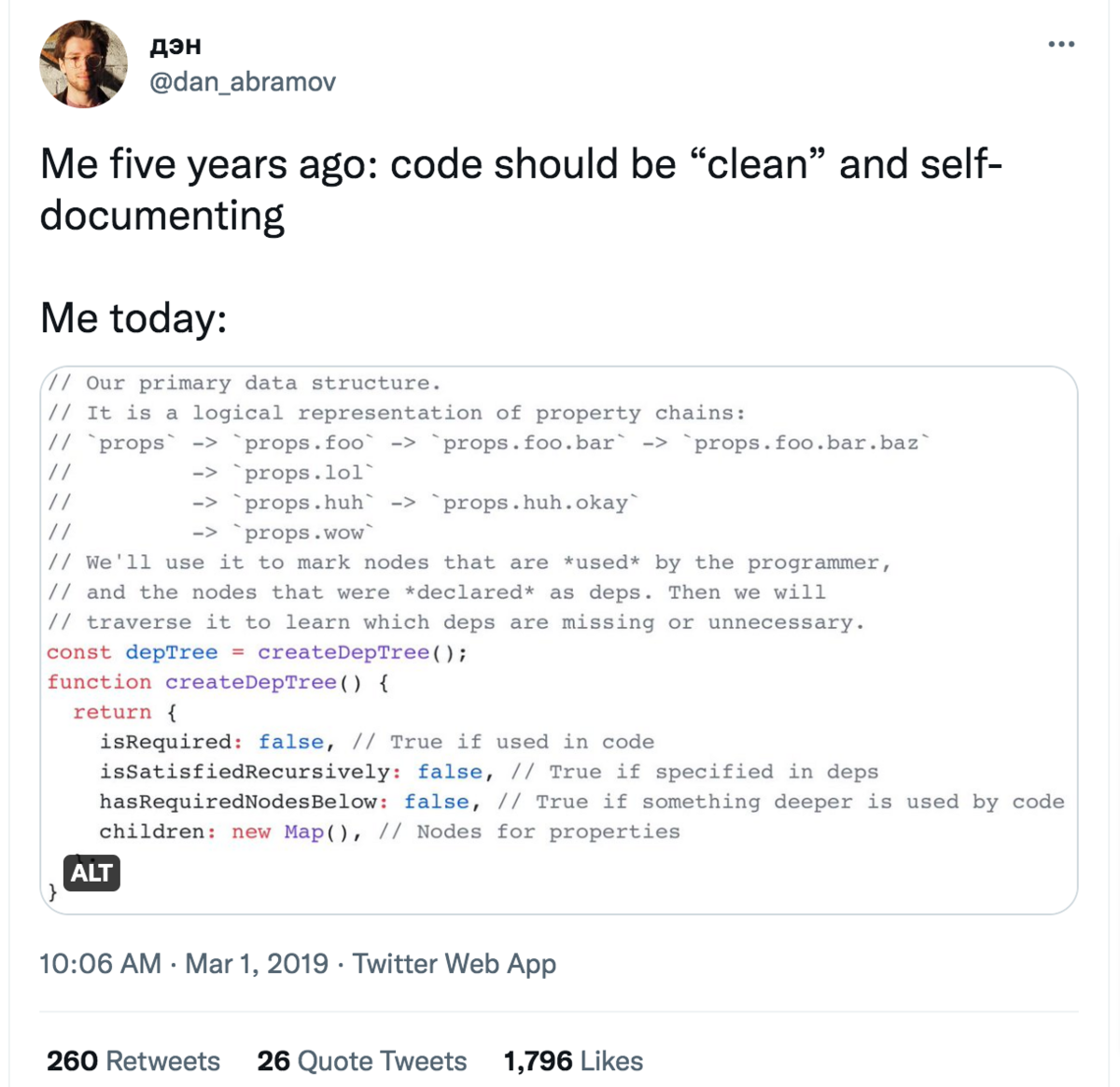
Documentation in your team is vital—it is the tool with which your team indirectly communicates with one another, thus providing an efficient working environment.
To achieve this, make sure to include the entire team in the process and have each member explain what they’re working on and the solutions they’ve come up with.
The purpose of documentation is to make everyone’s life easier. This means everyone needs to do their part and document their work.
Mozilla Developer Network’s documentation is a great example, as each page succinctly presents the relevant subject matter.
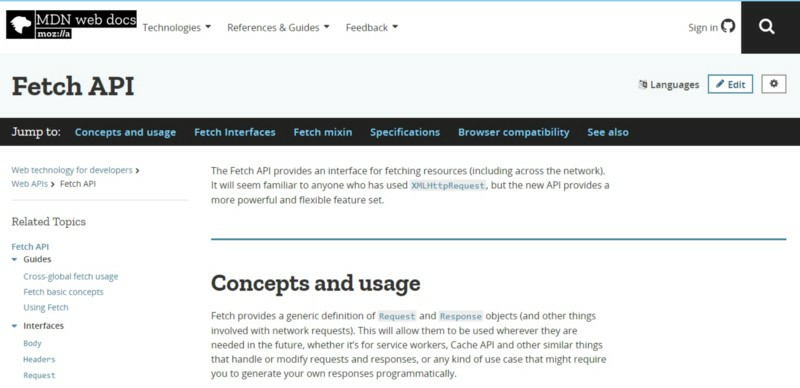
As you can see, there is a brief abstract for each topic, and the entire documentation is displayed in an organized manner.
There are plenty of tools to help you keep a structured documentation library. For instance, there’s Nuclino, a clean, unified workspace collaboration tool.
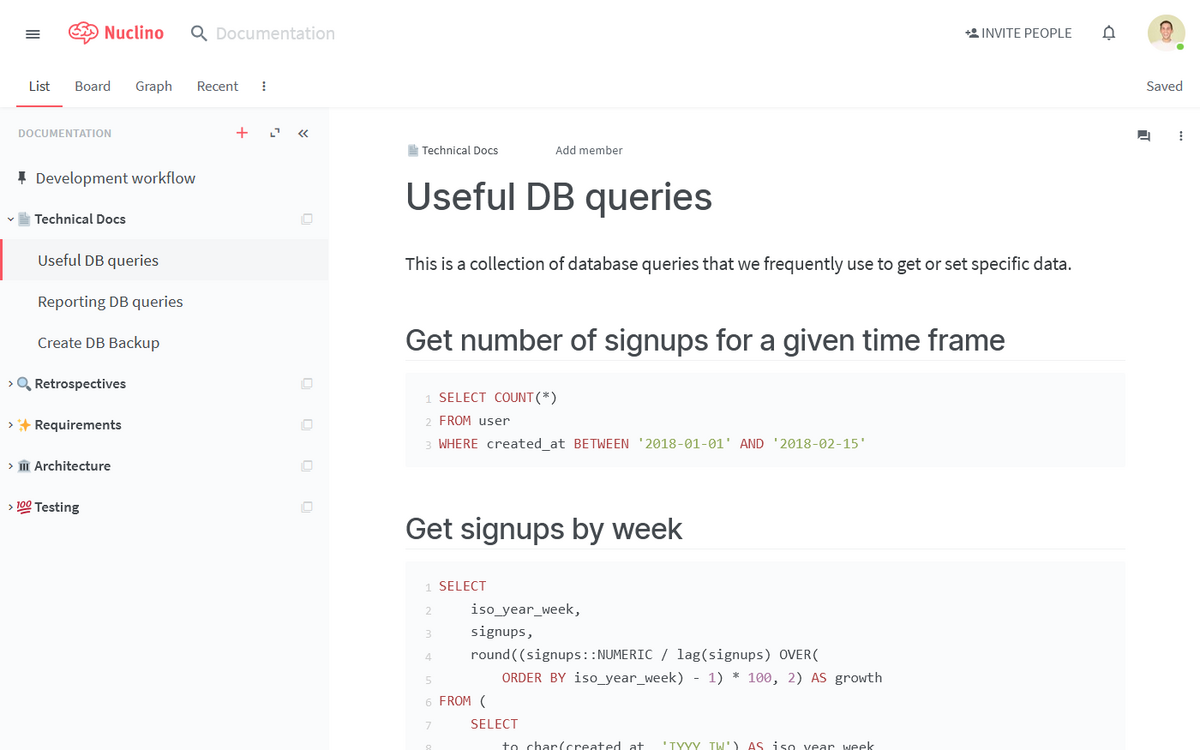
With this type of tool, your team can document and explain just about anything—and save one another a lot of headaches.
Prioritize a positive working culture
Often software developers quit out of hopelessness because they just can’t take it anymore. To avoid such a turn of events, build a positive culture at your workplace.
If you prioritize open communication and foster a supportive work environment at the office, your team will feel relaxed around you.
And if they do, they will approach you with their troubles instead of handing in their notice.
Create a pleasant workplace, and you and your teammates will likely be able to solve the underlying cause of the burnout together.
Johnny C. Taylor, CEO of the Society for Human Resources Management, suggests using your voice to advocate positive cultural changes.
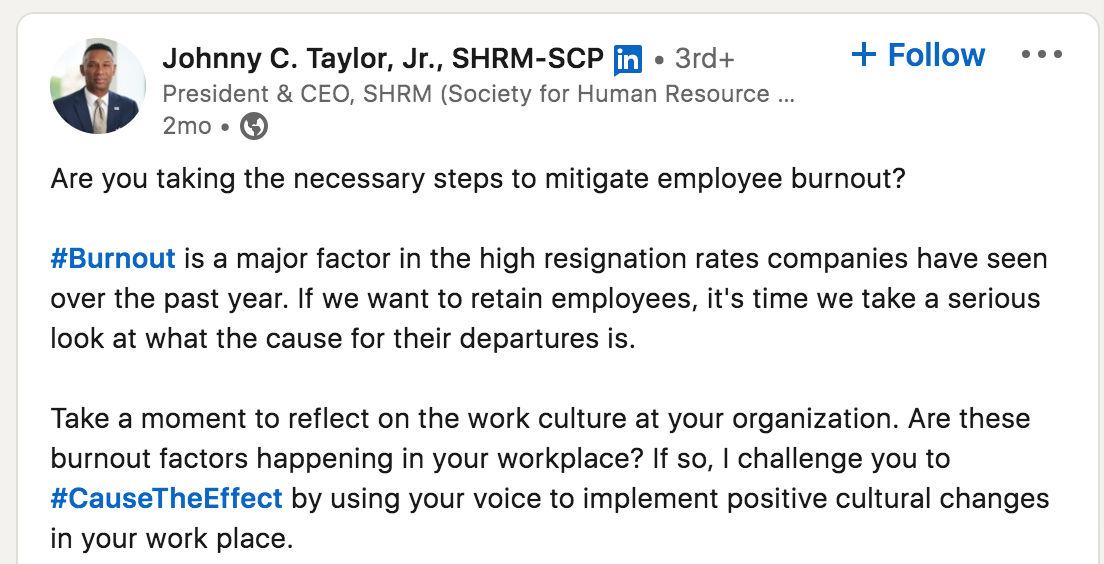
So, consider heeding his advice and speak up! When you notice a job well done or an elegantly-solved problem, give credit where it’s due.
Doing so will make your employees feel validated and demonstrate your gratitude for the effort they put in.
In a TechRepublic article on preventing burnout, Eric Shanks, Senior Solutions Architect at AHEAD, explains why recognition helps avert burnout.
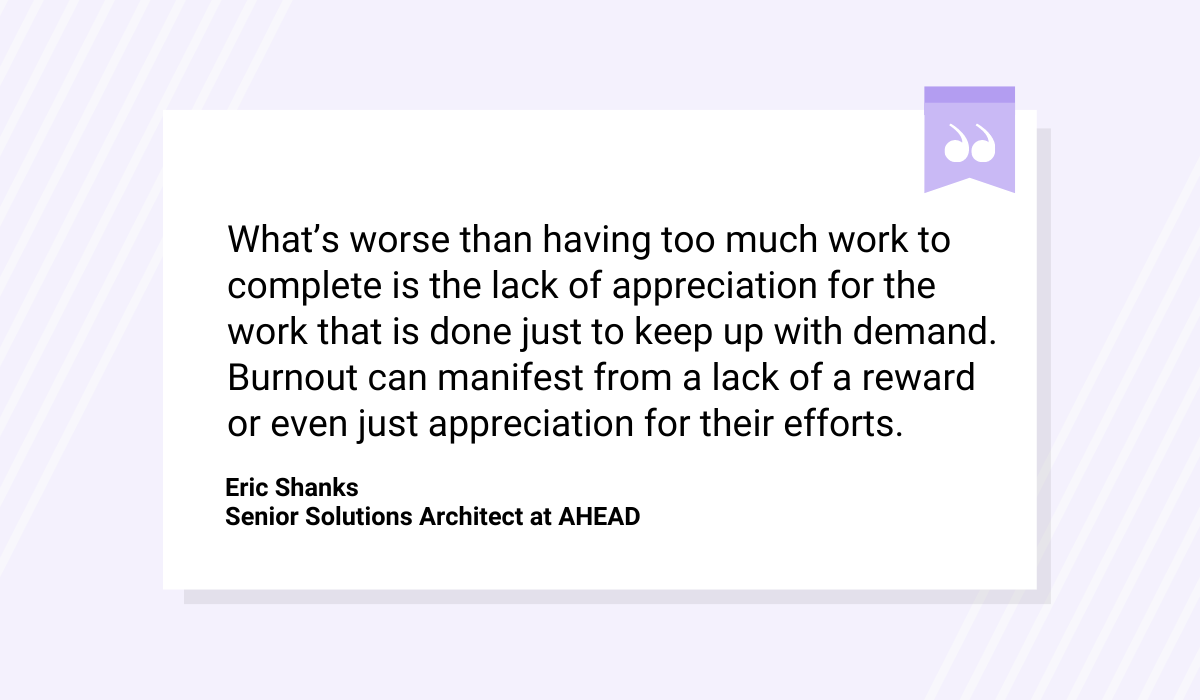
This effort to recognize your employees’ efforts is closely connected to a generative culture— one which is performance-oriented, doesn’t run from risks, and accepts failures as part of the process.
In a generative culture, challenges are encouraged, and even bad news is welcomed as a learning opportunity.
Below are the core values of a generative culture.

By adopting such a mindset, you can turn even the negatives into positives, as opposed to letting employees’ failures stress them out.
Allow for remote work
Another method for preventing burnout in your team is a practice popularized by COVID-19—remote work.
Research shows that working from home has dramatically improved employees’ work-life balance, and many prefer it over office work.
Your team will have more time for personal errands and should be able to balance hobbies and family with their professional life more easily.
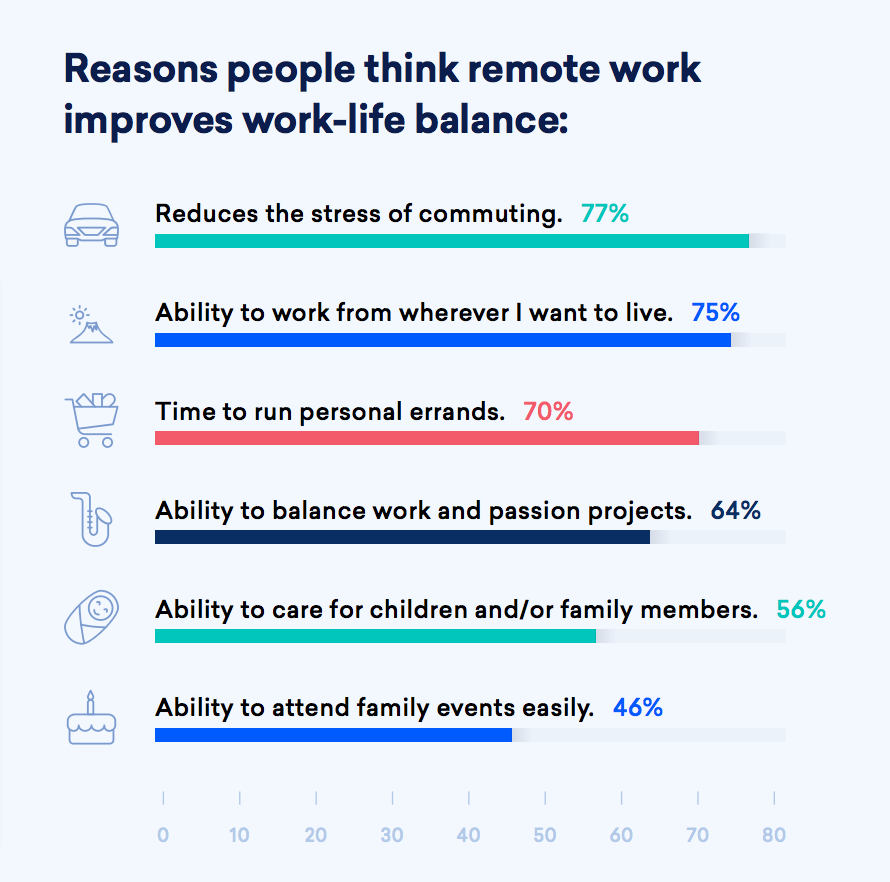
As you can see, the home office has numerous advantages for workers, including eliminating the stress of commuting.
Remove that stressor from the equation, and you should already have a happier and healthier team.
We can see proof of this at elMejorTrato.com.
After implementing two remote working days per week, the company’s developer retention rate rose by 24%, according to the TechRepublic article we’ve quoted before.
Clearly, the team there valued the opportunity to operate remotely.
Furthermore, elMejorTrato’s CTO and co-founder Cristian Rennella mentions another interesting point.
When software developers work from home, they are more focused, more productive, and generally less at risk of burning out.
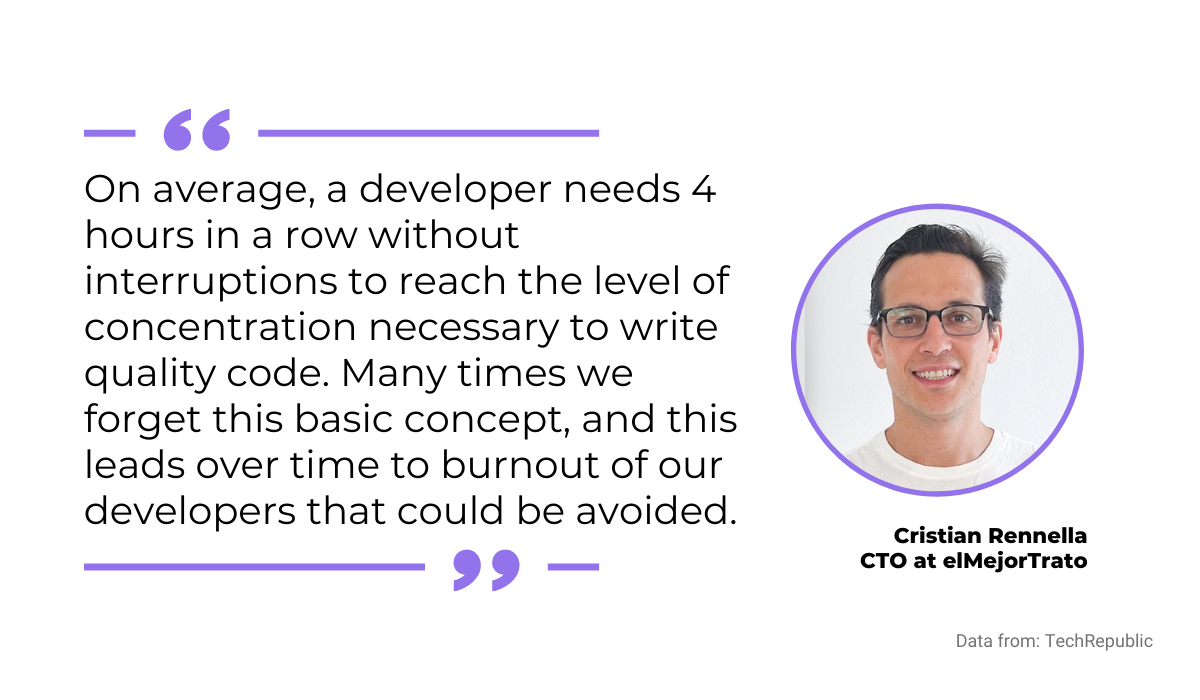
By working from home, software developers have fewer interruptions than at the office and can enter into a ‘deep work’ frame of mind (research shows that it takes 10-15 minutes to start editing code again after an interruption).
This is another reason to offer your team the option to work from home—the peace of mind that comes along with it should increase productivity and stop burnout.
Take a look at instacart.
The grocery platform is so outspoken about the value they place on work-life balance that they even help their employees set up their home office station, including reimbursements.
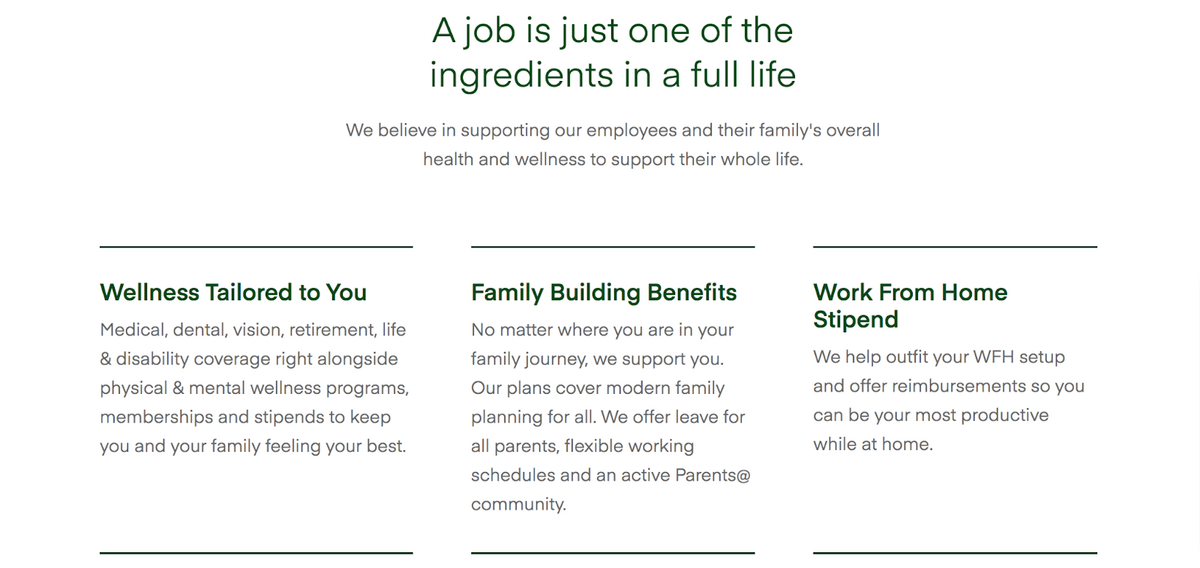
With this company’s commitment to supporting remote work and providing a healthy work environment, it is hard to imagine burnout happening often.
Encourage physical activity
Physical activity is another superb remedy for stopping burnout.
In fact, many software developers already utilize exercise as a form of stress relief, according to the StackOverflow survey for 2022.
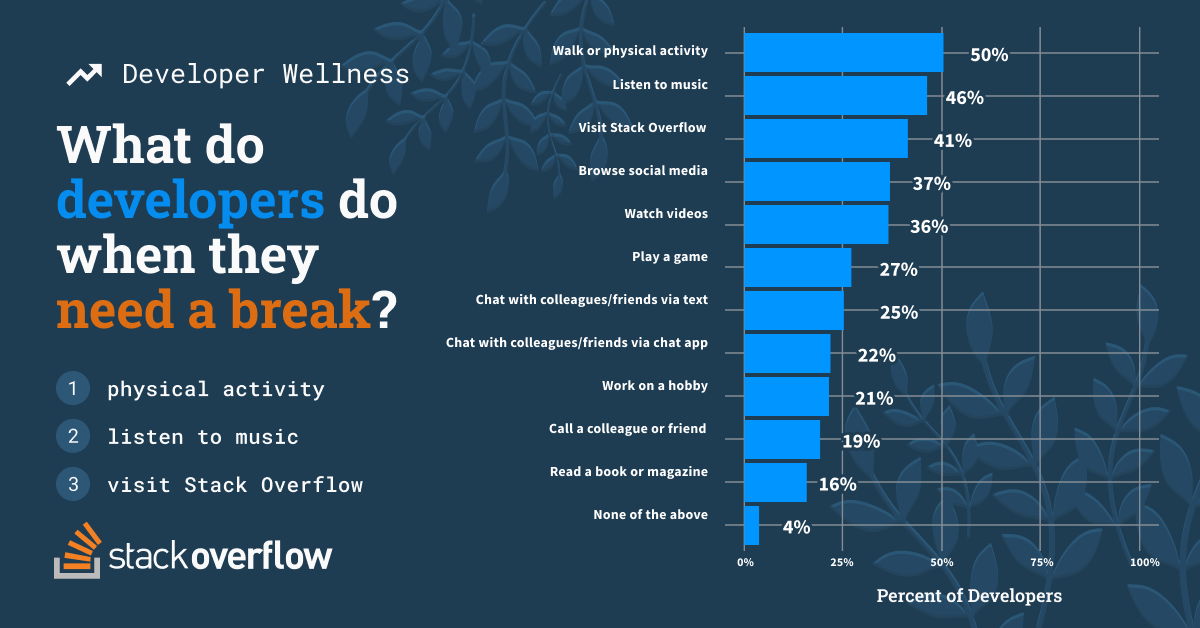
Given that physical activity is a developer’s first choice whenever they need a break, it’s worth keeping this information in mind for your team.
However, these findings shouldn’t come as a surprise. Research shows that moving your body can do wonders for your mental health.
Exercising should improve your employees’ mood and reduce the harmful effects of stress that could ultimately lead to burnout.
That being said, how do you actually get your team to start moving?
One small strategy you could implement is to put up signs near staircases, encouraging employees to take the stairs instead of the elevator.
If you’d like to go the extra mile, offering a gym pass or even starting a company running club wouldn’t be a bad idea.
Running is a fantastic sport because no equipment is required, all you need is a pair of running shoes.
Another viable option is to hand out pedometers to your team on the company’s budget. You can all compete to see who gets to 10,000 steps first!
Walking 10k a day brings numerous health benefits, one of which is combating anger, depression, and anxiety—telltale signs of burnout.
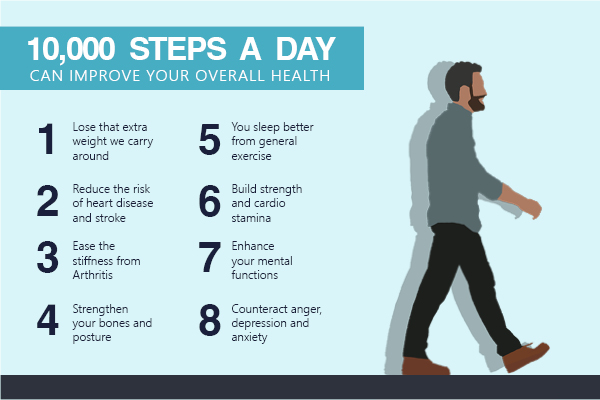
Besides running, biking is an excellent second option for promoting physical activity.
Mixte Communications promotes biking to work to clear one’s mind and stay fit, and the company provides fantastic amenities for their cause.
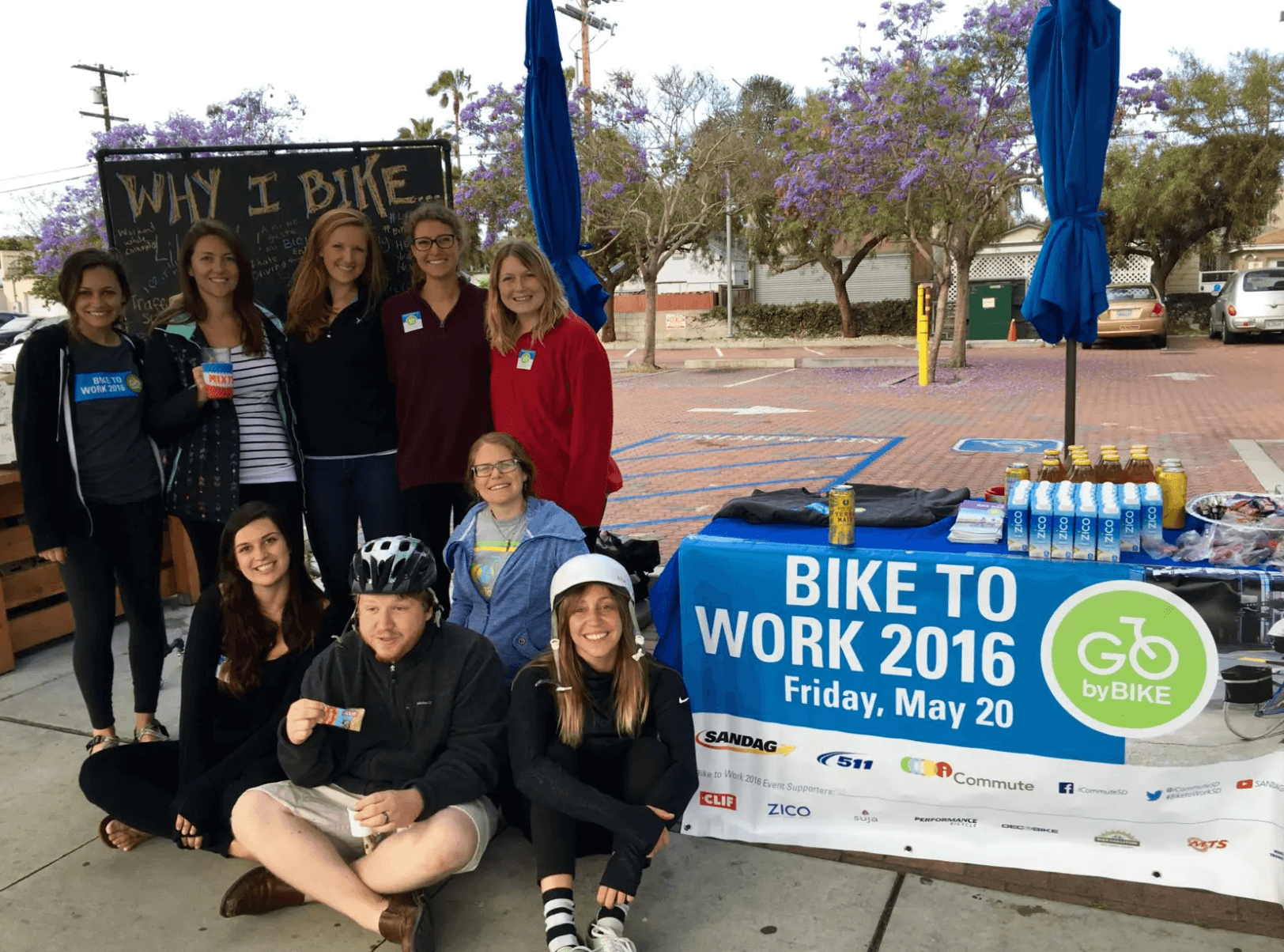
Mixte employees are offered showers at their office, a flexible dress code to facilitate biking to work, bike parking, and bike maintenance workshops to promote a more active lifestyle.
Set realistic deadlines
Unattainable deadlines are one of the most common causes of burnout.
Facing an unrealistic deadline can occupy all of your employees’ thoughts, leaving them overwhelmed and hyper-focused on the task at hand but without the peace of mind to work calmly.
Such a feeling of work overload can cause serious burnout, as developers feel they’re not getting anything done on time. Flo Defontis, CTO of Air360, also remarks on this.
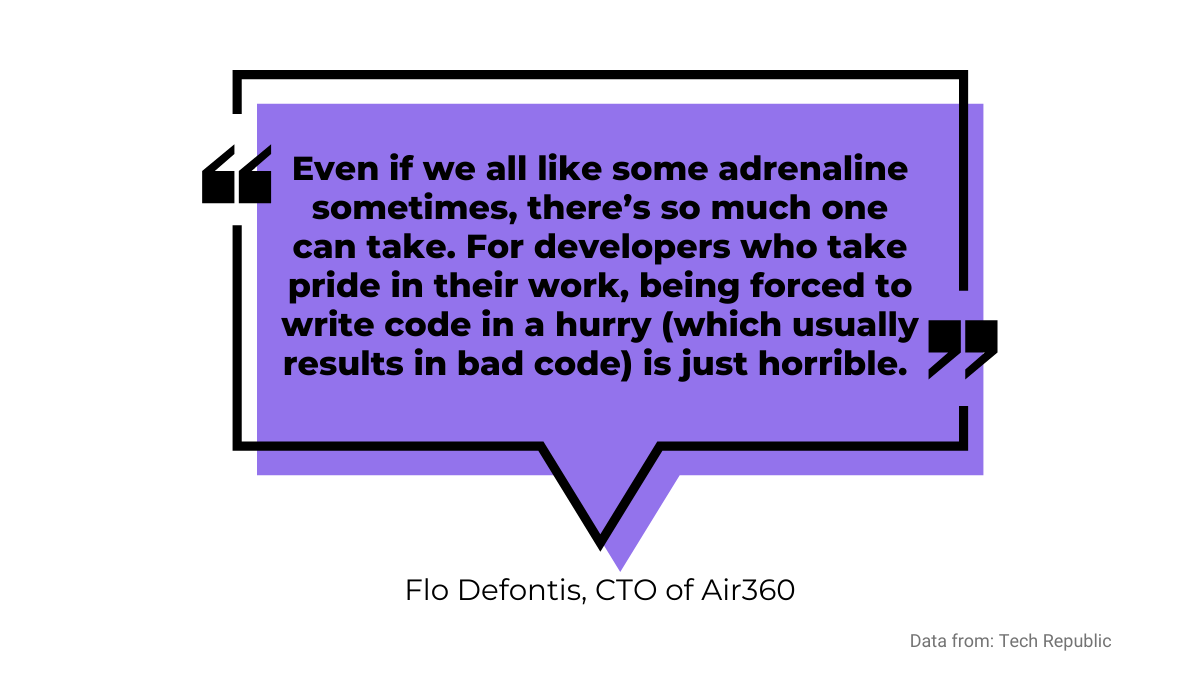
Furthermore, if the only product your employees are producing is bad code, this can lead to a considerable drop in esteem and motivation.
Developers won’t see their abilities being put to good use, won’t have anything to be proud of, and won’t feel valuable—or valued—anymore, leading to burnout.
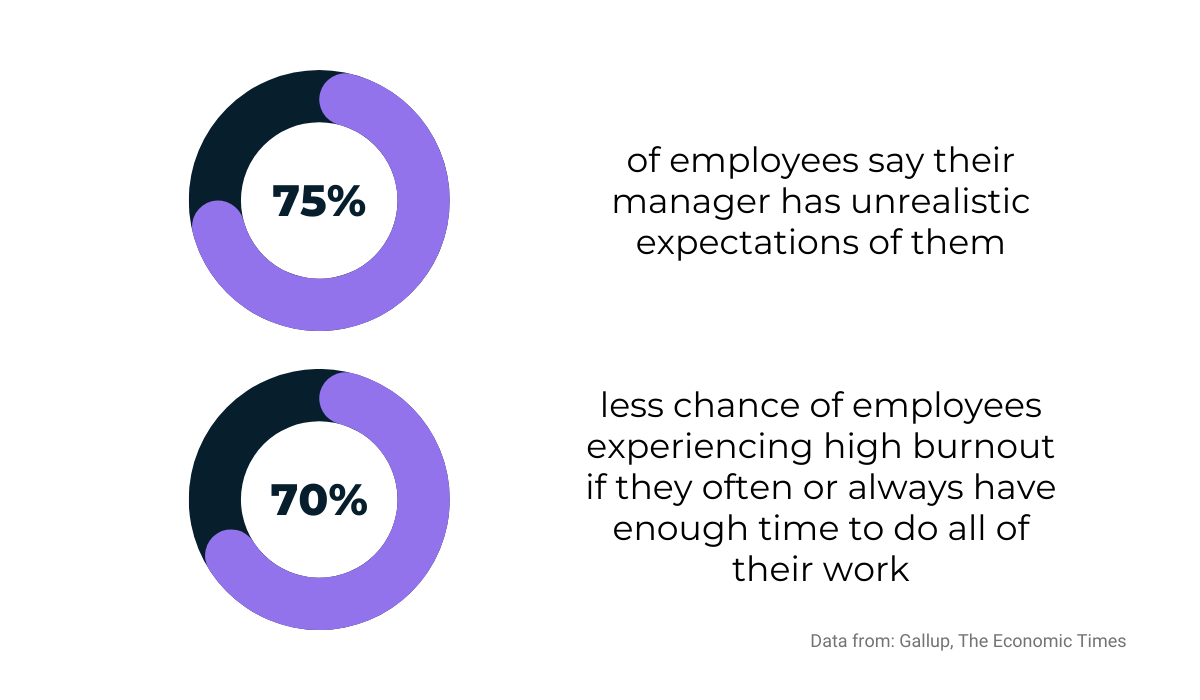
As the data above shows, employees could avoid burnout if they had realistic deadlines for their tasks.
When you’re setting up deadlines for your employees, ask them if they think they’re realistic. Don’t just come up with the end date on your own.
Instead, include them in the decision—they will be the best judges of how long they need for a task.
If you want to really stay on top of the workload, it might also be worth investing in time-tracking software.
With it, you’ll have an overview of exactly how much time each task takes and will have a better idea of a realistic deadline. Timely isn’t a bad solution.
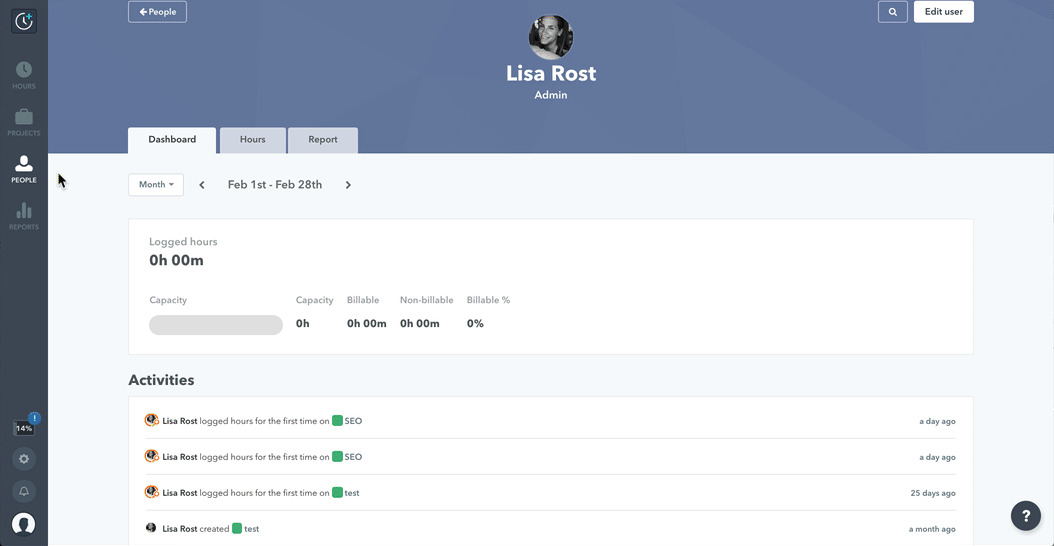
With this tool, you can track how long a task took and then compare that timeframe against your planned deadline. This is sure to assist with setting realistic deadlines and preventing burnout.
Encourage vacations
Don’t wait around if you notice any early signs of burnout in your employees. Instead, nip the issue in the bud.
Paid time off is frighteningly underused, yet cashing in vacation time can greatly benefit your employees’ well-being.
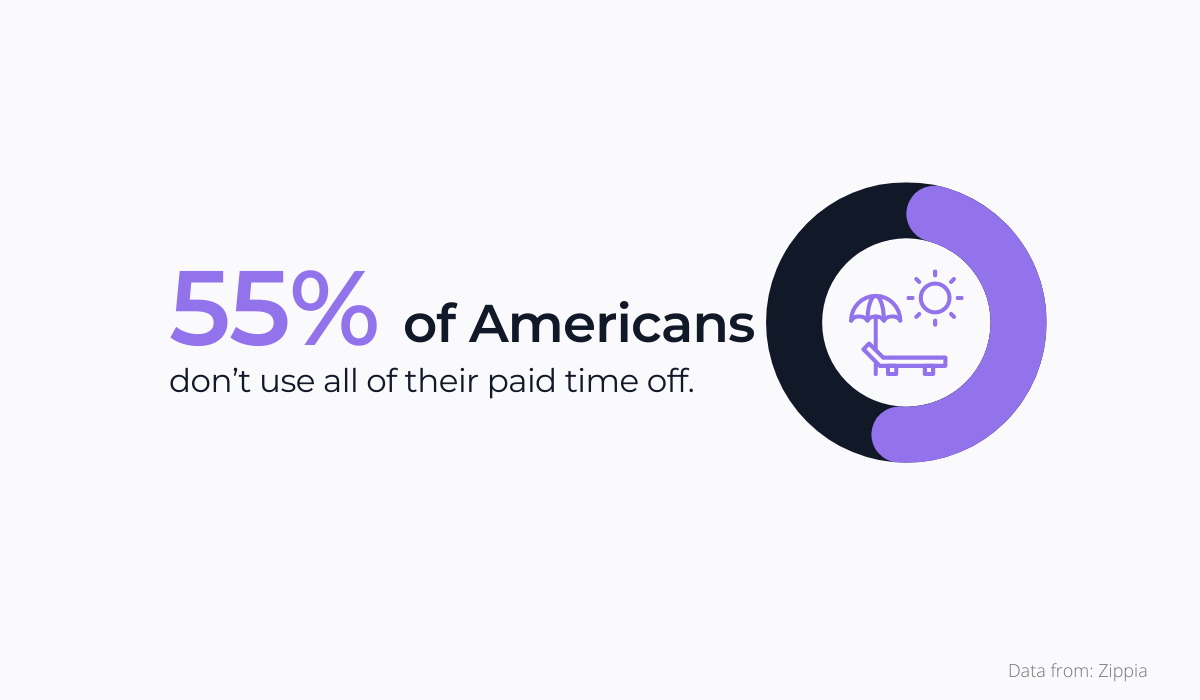
This statistic is concerning as it shows how many workers are reluctant to utilize the vacation time they have a right to.
Days off are nothing to be scoffed at, they help workers ‘reset’ and clear their minds.
Renowned internet personality Jordan B. Peterson is also a proponent of taking time off and suggests taking four days off at least every three months.
Listen to him explain the benefits of vacations in more detail here:
Just as Peterson encourages breaks, so is it important to suggest that your team members take time off.
Even better, show them that it is okay to do so by taking time off yourself!
Enjoy your vacation days and your employees should then feel encouraged to follow your example.
Ryan McNitzky, a Sales Team Lead at Redgate Software, is one such manager who is unafraid to take his paid time off.
His example likely inspired several of his connections to follow in his footsteps and save themselves from burnout.
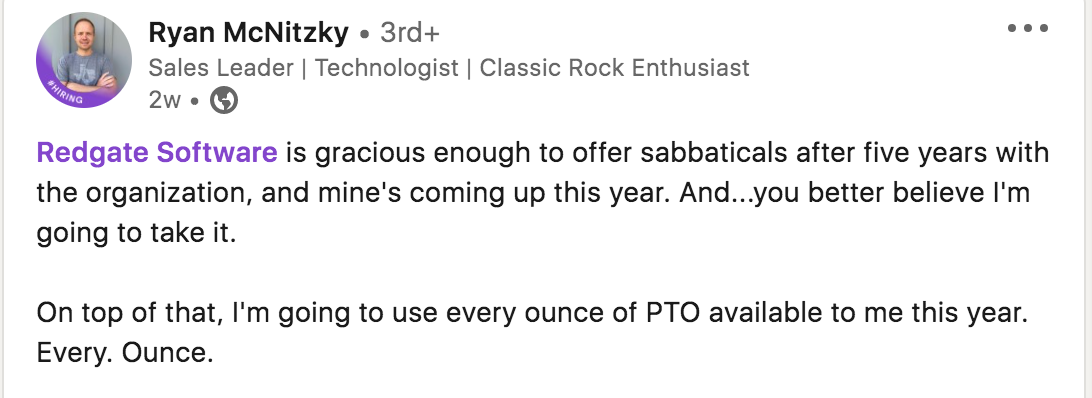
Another strategy to encourage vacations is introducing and advertising mental health days.
Make it standard practice for your team members to take a day off work for their psychological well-being.
In fact, make sure this is highlighted at onboarding, and advertise the practice in your company’s vacation policy documentation.
Clearly define team roles
According to a report by Gallup, not all employees know what exactly is expected from them at the workplace.
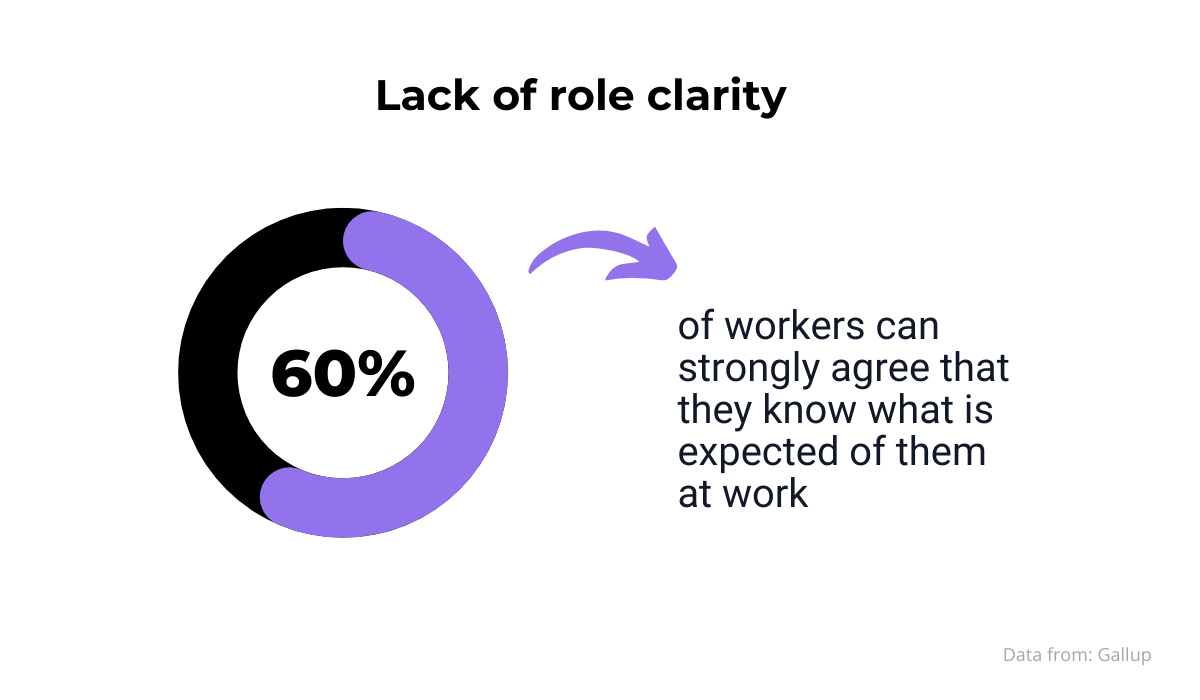
This statistic, although seemingly high at first, is actually worryingly low.
Not knowing what one’s tasks are constitutes a stressor that shouldn’t exist in the workplace: this information should be clear from the outset.
As Nancy Wang puts it in the TechRepublic article we’ve quoted before, it is a manager’s responsibility to set clear expectations for your team.
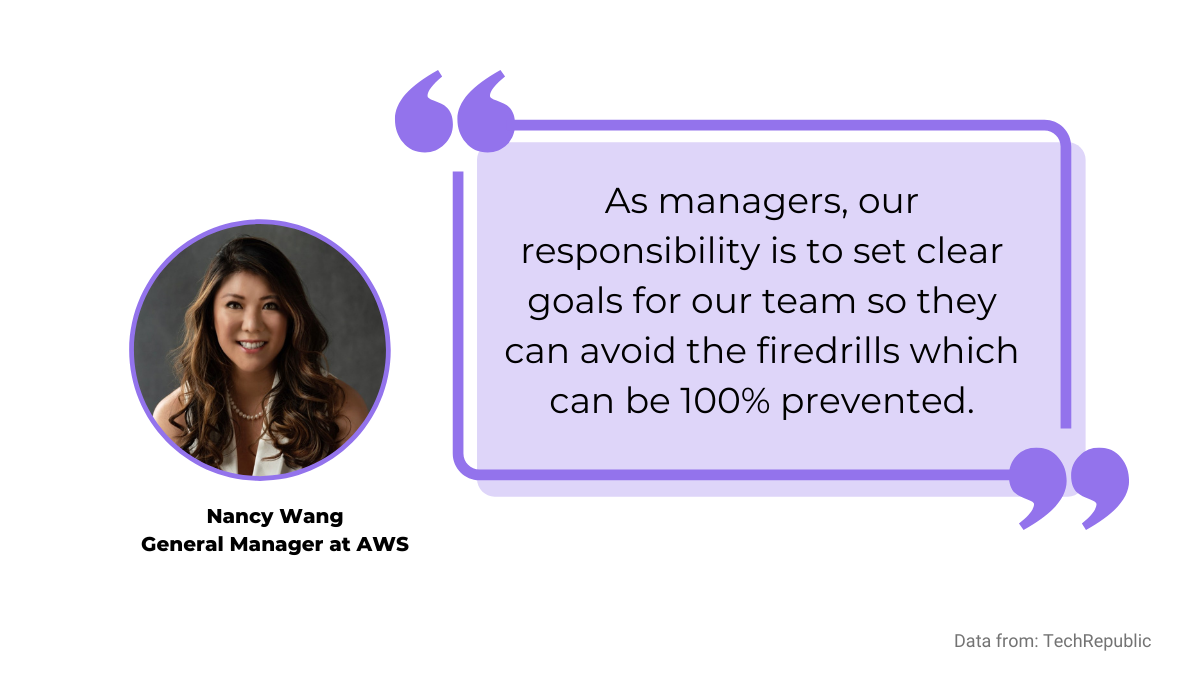
This will help stave off burnout, as all your employees are then well aware of their accountability —what is their concern and what is not.
The most straightforward strategy for defining your team’s roles is a practice as old as time—just write it down.
Document the distribution of tasks, note the designated deadline, and make the file accessible to everyone.
That way, there is no uncertainty—everyone should be on the same page and fully aware of their responsibilities.
Fellow is a tool that can help you with this. It’s a meeting management software that also offers digital notepads.
You can use those to create a collaborative to-do list for your entire team, with each role listed.
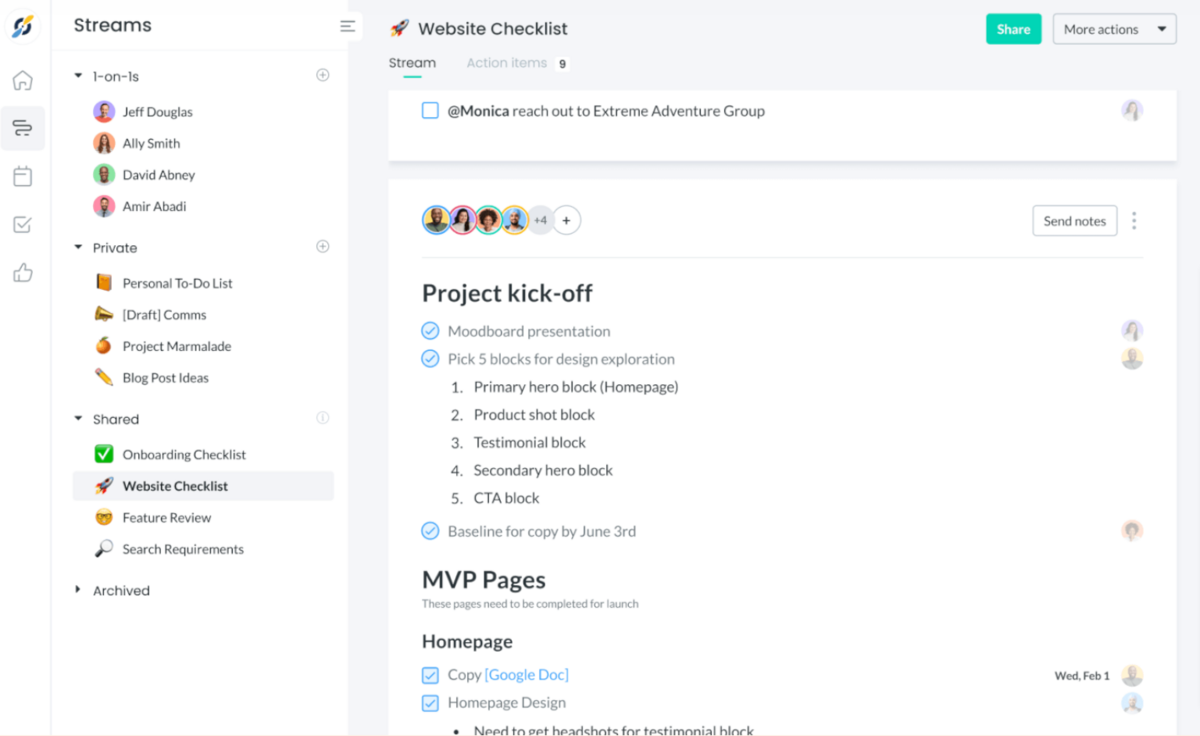
As you can see, you can use it to create a to-do list or a meeting agenda. This is another great tip for ensuring everyone is on the same page.
Whenever you’re hosting a team meeting, go over everyone’s current tasks, responsibilities, and priorities. It is all written down, yes, but reiterating the team’s roles can’t hurt.
Offer professional development
Burnout can also occur if your employees feel like they’re not up to the task they are given.
When they feel out of their depth and unsure of their knowledge, they become hopeless and feel like they aren’t good enough, which leads to psychological strain.
As Justin Cooper advises in the TechRepublic piece we’ve referred to earlier, providing training to developers can do a world of wonders.
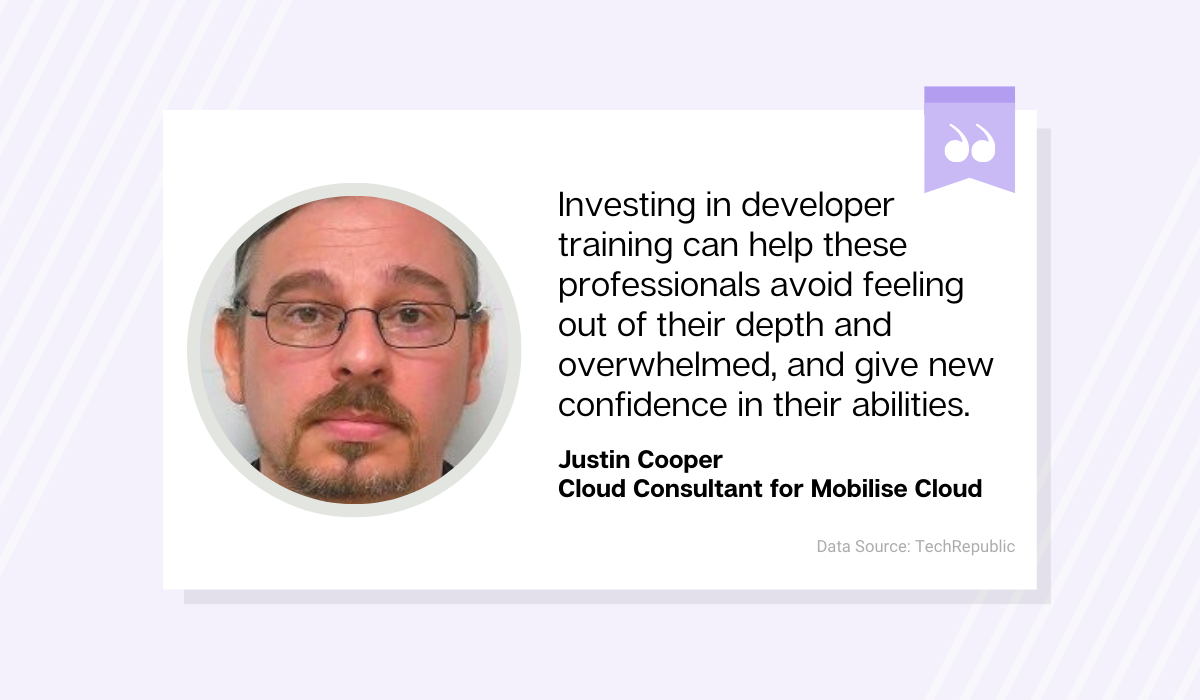
After offering professional development, your employees should feel much more confident in their skills.
With this newfound knowledge, the sense of being overwhelmed will likely disappear, reducing the possibility of burnout.
Professional development is not only for those eager to learn more. It’s also for the bored.
If your team is getting bogged down in the same tasks, if their concentration is slipping due to monotony, they are also prime candidates for additional training.
Providing them with the chance to learn new skills will keep the workplace exciting and fresh, and they’ll have the opportunity to exercise their mind.
Emergent Software is an excellent example of a company providing professional development.
As per this employee’s five-star review of the company, each employee receives 100 hours a year to spend on training and self-development.
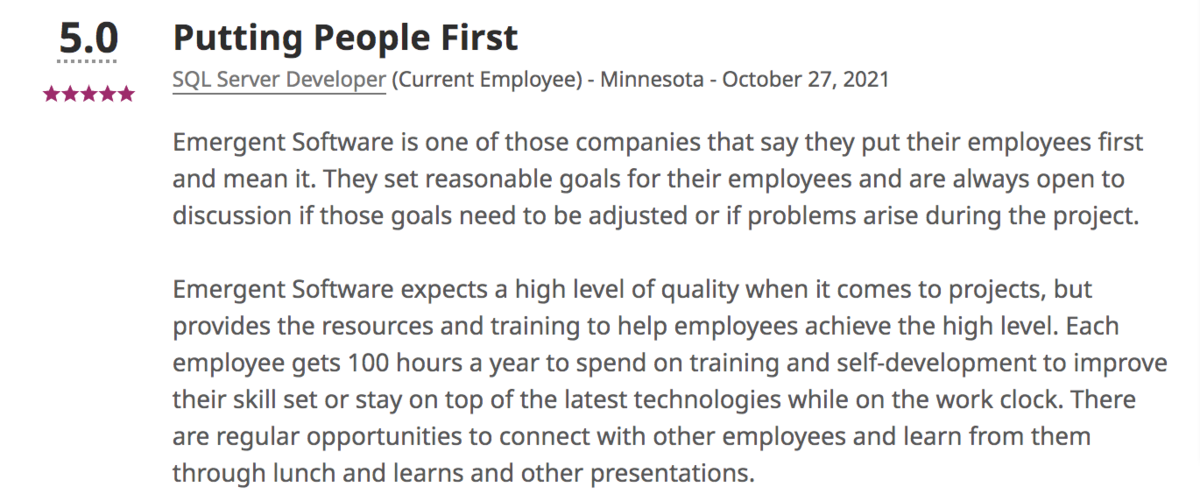
This particular reviewer obviously greatly appreciates the opportunity.
Taking Emergent Software as an example, it would be beneficial to develop a budget purely for training your employees and/or participating in tech conferences.
Such educational activities outside the office help break the monotony of day-to-day tasks and prevent burnout.
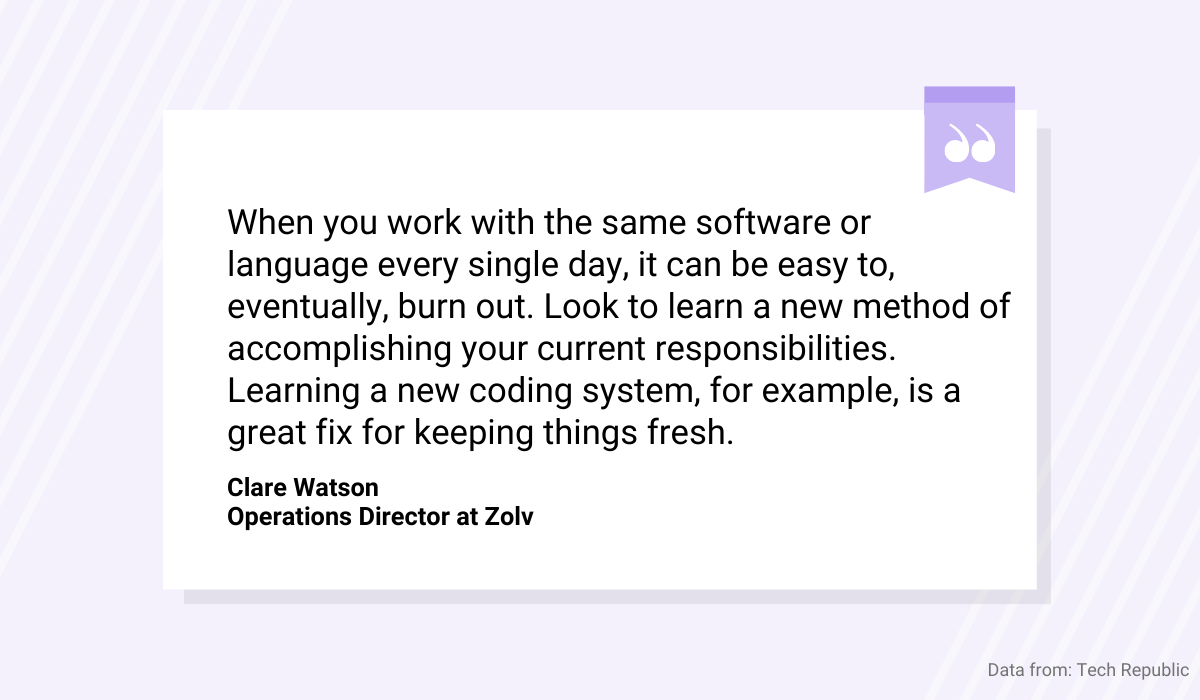
As per Clare Watson’s warning, make sure this doesn’t happen to your employees. Try and break the status-quo every once in a while when you notice one too many repetitive tasks.
Conclusion
A software development company can be a sedentary, chaotic, demanding work environment.
In such a fast-moving, high-stress work culture, with so much expected from employees, it’s not unusual for developers to feel the effects of stress.
That being said, there are tactics to provide your team with the right kind of support to avoid burnout.
For instance, encourage vacations among your team, offer them the possibility of working remotely, and keep everything documented to facilitate communication.
These are only some of the tips we’ve included that can help keep your team in high spirits.
One of them is bound to come in handy!





